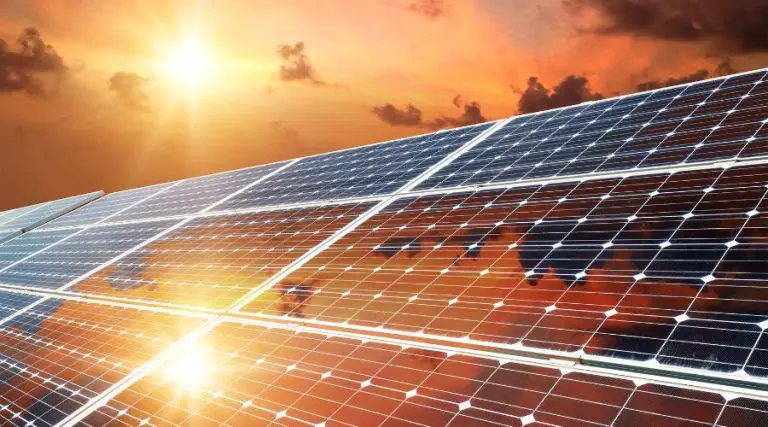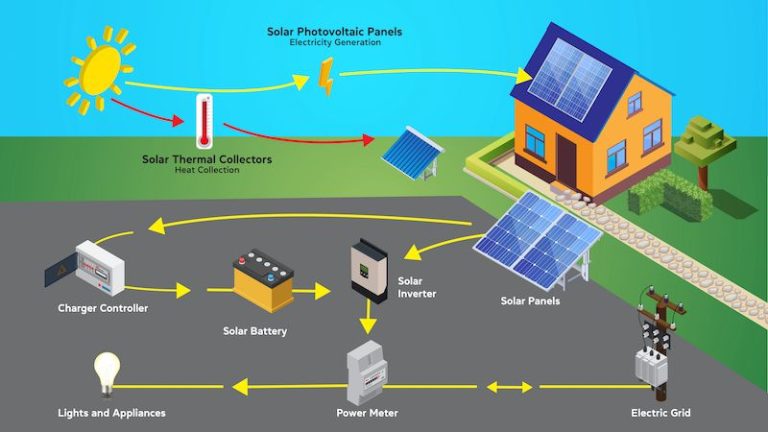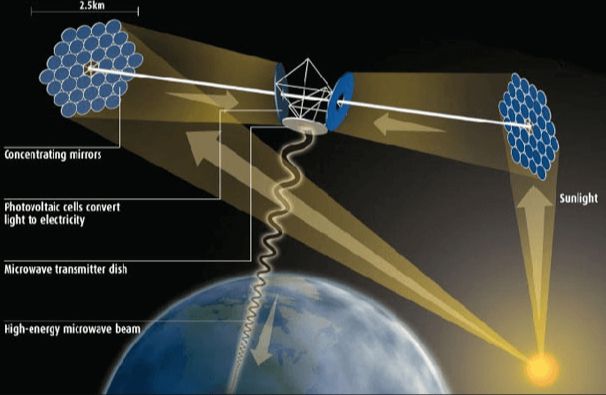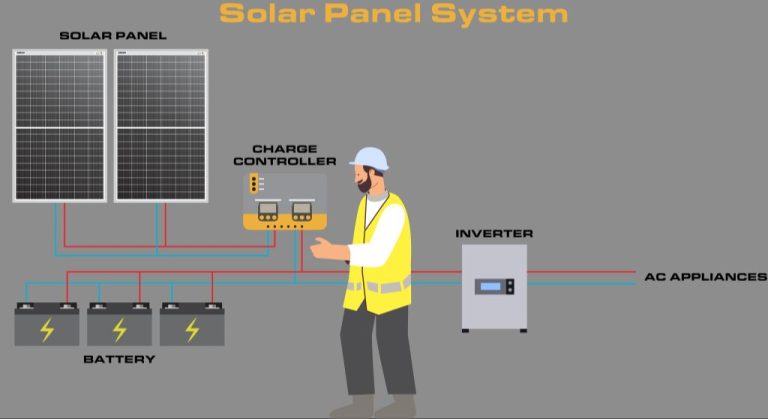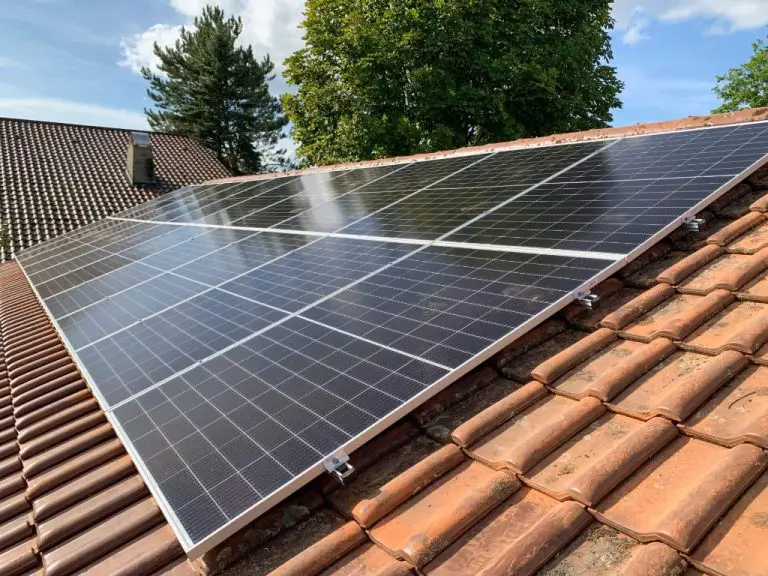What Is The Definition Of Solar Energy Quizlet?
What is Solar Energy?
Solar energy is the radiant light and heat that comes from the sun. It is considered a renewable energy source because the sun will continue to produce energy for billions of years (1). Solar energy technologies capture this radiation and convert it into useful forms of energy such as heat and electricity.
The term “solar energy” most often refers specifically to solar photovoltaics, which generate electricity from sunlight. However, solar energy can also describe other technologies such as solar heating and cooling, solar thermal energy, solar architecture and artificial photosynthesis (2).
Solar energy is a renewable energy source, meaning it is a virtually endless resource. Other renewable resources include wind, hydro, geothermal, and biomass. Renewables are extremely important because they produce little to no greenhouse gases that contribute to climate change (3).
Sources:
(1) https://www.britannica.com/science/solar-energy
(2) https://www.seia.org/initiatives/about-solar-energy
(3) https://education.nationalgeographic.org/resource/solar-energy/
How Does Solar Energy Work?
Solar energy technologies convert the sun’s rays into useful forms of energy primarily through two methods: photovoltaics (PV) and solar heating & cooling (SHC).
Photovoltaic solar panels, or solar PV, convert sunlight directly into electricity through the photovoltaic effect. Solar panels contain solar cells made up of semiconducting materials that absorb photons from sunlight and release electrons. The stream of freed electrons generates an electric current that is captured by the solar PV system as electricity.[1]
Solar thermal technologies, also known as solar heating & cooling systems, harness solar radiation to generate thermal energy in the form of heat. Solar water heaters, solar furnaces, and other solar thermal systems concentrate sunlight using mirrors or lenses to produce elevated temperatures that can be used for water heating, space heating, cooking, process heat, power generation, and more.[2]
[1] https://www.energy.gov/eere/solar/how-does-solar-work
[2] https://www.nationalgrid.com/stories/energy-explained/how-does-solar-power-work
Types of Solar Energy Technologies
There are several main types of technologies used to harness solar energy:
Photovoltaics (PV) – PV cells, also known as solar cells, are made of semiconductor materials that convert sunlight directly into electricity. When sunlight hits the PV cell, electrons are knocked loose from the atoms in the semiconductor material, creating an electric current. PV systems can be small and modular for powering homes and businesses, or large utility-scale solar farms. According to the Solar Energy Industries Association, PV accounted for over 40% of new U.S. generating capacity in 2021. [1]
Concentrated Solar Power (CSP) – CSP uses mirrors to focus sunlight on a central receiver, heating up a liquid that creates steam to spin a turbine and generate electricity. Unlike PV, CSP stores energy as heat, allowing electricity production to continue when the sun isn’t shining. There are several types of CSP technologies including parabolic trough systems, linear Fresnel reflector systems, power towers, and dish/engine systems. CSP accounted for just 2% of global solar additions in 2021. [2]
Solar Heating and Cooling (SHC) – SHC technologies use solar collectors to harvest heat from the sun to provide hot water, space heating, or thermal energy for industrial processes and cooling through absorption chilling. Common SHC collectors include flat-plate collectors, evacuated tube collectors, and concentrating collectors. In 2020, over 100,000 U.S. homes and businesses installed solar thermal collectors. [1]
Passive Solar – Passive solar building design takes advantage of sunlight and heat without the use of mechanical devices or systems. Strategies include building orientation, window placement, thermal mass, insulation, overhangs, and landscaping to naturally heat and light buildings. Passive solar can reduce the need for heating and cooling by 30-50%. [2]
Benefits of Solar Energy
Solar energy has numerous benefits that make it an attractive renewable energy source. Some key advantages include:
Solar energy is renewable and sustainable. Unlike fossil fuels which are finite, the sun provides a virtually endless supply of energy that will last as long as the sun shines. Solar panels can continue producing electricity for decades with minimal maintenance or intervention after initial setup.
Solar energy reduces reliance on fossil fuels. By offsetting electricity generation from coal, natural gas, and other finite resources, solar energy decreases the amount of fossil fuels needed to power our homes, businesses, and grid. Widespread adoption of solar would allow us to conserve more of these non-renewable fuels.
Solar energy produces minimal carbon emissions. Since solar panels generate electricity directly from sunlight without any combustion, the process produces no direct carbon dioxide emissions. Solar helps lower the carbon intensity of electricity generation when displacing fossil fuel-powered plants connected to the grid.
Solar power can be decentralized. Solar panels can be installed on rooftops and locally where the energy will be used. This allows more distributed power generation rather than reliance on large, centralized plants. Decentralized solar provides greater grid resilience, energy access, and independence.
Sources:
https://www.energy.gov/energysaver/benefits-residential-solar-electricity
https://www.energy.gov/energysaver/articles/5-benefits-residential-solar
Limitations of Solar Energy
While solar energy has many benefits, it also comes with some limitations that are important to consider. Some of the main disadvantages of solar energy include:
Intermittent source: Solar energy relies on sunlight to produce electricity, which means production is intermittent and varies based on weather and seasons. Solar only generates energy during daylight hours when the sun is shining, so energy storage or a supplemental energy source is needed for cloudy days and nighttime hours (source).
Higher upfront costs: Installing a residential or commercial solar energy system requires high upfront investment. The cost of purchasing and installing solar panels, inverters and other equipment can be prohibitive for some homeowners and businesses (source).
Large land area may be needed: Utility-scale solar farms require significant land area to generate enough electricity. Finding and permitting large contiguous areas suitable for solar farms can be challenging, especially near high electricity demand centers like cities (source).
Solar Energy Capacity and Growth
Global solar energy capacity reached over 1,000 GW in 2021 according to the International Energy Agency (IEA) (IEA). This represents exponential growth, with solar capacity increasing over 200-fold since 2000. The IEA reports that solar photovoltaics (PV) accounted for 4.5% of total global electricity generation in 2021, making it the third largest renewable electricity source behind hydropower and wind power.
Data from Our World in Data shows the dramatic growth in installed solar PV capacity over the past couple decades (Our World in Data). In 2000, global solar PV capacity stood at only 1.5 GW. By 2010 it had grown over 10-fold to 17 GW. Capacity surpassed 100 GW in 2012 and increased nearly 10-fold again to over 400 GW by the end of 2017. This exponential growth trend has continued, with global solar PV capacity reaching 1,147 GW by the end of 2021.
Forecasts predict strong continued growth in coming years. The IEA projects global solar PV capacity could reach over 5,000 GW by 2050 in their Net Zero scenario. With plummeting costs and increased policy support, solar is poised to play a major role in the global energy transition and climate change mitigation efforts.
Top Countries Using Solar Energy
Solar energy capacity has grown rapidly in the past decade, with the top countries leading the way. According to Wikipedia, here are the top 5 countries using solar energy:
China – With around 390 GW of installed capacity in 2022, China accounts for nearly two-fifths of total global solar capacity. Massive investments in solar have helped China become the world’s largest producer and consumer of solar energy.
United States – The US has the second highest installed solar capacity in the world at around 130 GW as of 2022. Favorable policies, declining costs, and ample solar resources have driven growth, especially in California, Texas and Florida.
Japan – Japan had around 75 GW of installed solar capacity in 2022. The country rapidly expanded solar after the Fukushima nuclear disaster, aided by generous feed-in tariffs.
Germany – Germany is fourth globally with around 60 GW of installed solar capacity in 2022. The country pioneered early growth through robust incentives and has transitioned to more market-based support.
India – With around 60 GW of installed capacity, India ranks fifth for total solar energy. The government has set ambitious targets to expand solar capacity to meet rising electricity demand sustainably.
Solar Energy Storage
Solar energy systems need a way to store excess electricity that is generated during sunlight hours for use at night or on cloudy days. There are several methods of energy storage that are commonly paired with solar systems:
Batteries are a popular storage method, especially lithium-ion batteries, which have become more affordable in recent years. Batteries connected to solar panels can store excess electricity for later use. They allow solar system owners to shift their energy consumption to when solar isn’t producing electricity. Lead-acid batteries are also sometimes used but have shorter lifespans than lithium-ion.
Thermal storage involves heating or cooling a storage medium like molten salt or water when excess solar electricity is available. The thermal energy can then be used later to drive a generator or steam turbine. This allows solar plants to continue generating electricity when the sun isn’t shining. Thermal storage systems are often larger scale for utilities.
Pumped hydro storage stores energy by pumping water uphill into a reservoir when solar electricity supply exceeds demand. When solar output drops, the water is released through turbines to generate hydroelectric power. Pumped hydro storage requires locations with significant elevation changes and bodies of water.
Sources:
https://www.energy.gov/eere/solar/solar-integration-solar-energy-and-storage-basics
Solar Energy Costs
The costs of solar energy have declined significantly over the last decade, making it increasingly competitive with conventional energy sources. The main costs associated with solar power are the upfront capital costs of purchasing and installing solar panels and related equipment. These capital costs make up the largest share of the total lifecycle costs.
The levelized cost of electricity (LCOE) is a measure used to compare energy sources based on total lifetime costs divided by total energy production. According to the National Renewable Energy Laboratory, the LCOE for utility-scale solar photovoltaics has dropped 88% since 2009, from around $0.37 per kWh in 2009 to $0.04 per kWh in 2021 [1]. In 2022, the global average LCOE for newly commissioned utility-scale solar was around $0.053 per kWh according to IRENA [2]. Despite increases in commodity prices, the International Energy Agency found the global average LCOE for solar increased only slightly in 2022 to $0.096 per kWh [3].
The declines in solar costs are driven largely by economies of scale, technological improvements, and market competition. With continued advancements in solar cell efficiency, manufacturing techniques, supply chains, and financing innovations, the costs of solar are projected to continue decreasing over time.
Future of Solar Energy
The future looks bright for solar energy. According to the MIT Energy Initiative report, solar is expected to continue its rapid growth, with total global capacity projected to reach over 4,000 gigawatts by 2050, up from about 580 gigawatts today.
Several factors will contribute to this growth. Costs of solar technologies are predicted to continue falling, making solar more competitive with fossil fuels. New technologies like perovskite solar cells and organic PV could push efficiencies higher while lowering costs further. Energy storage innovations will also facilitate greater solar adoption.
Solar will play a major role in the global renewable energy transition. As countries seek to decarbonize their electricity production, solar provides a clean, sustainable alternative to fossil fuels. According to the International Renewable Energy Agency, solar could supply up to 22% of global electricity demand by 2050.
Overall, the future is bright for solar thanks to expected cost reductions, technology improvements, supportive government policies, and the need for clean energy. Solar is poised to be a growing part of the global energy mix in the coming decades.

